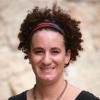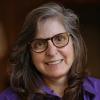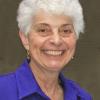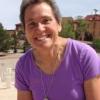Dominican Sr. Sue Gardner is not Native American, but she has had a love for native people since she was a child, and has worked closely with them for the past eight years. Now she is the director of the Native American Apostolate for the diocese of Gaylord, Michigan, and the pastoral administrator of Saint Kateri Tekakwitha Parish in Suttons Bay, Michigan, about 20 miles northwest of Traverse City.
Sr. M. Ivanna B. Ennemoser knows how to make a budget stretch. Ennemoser runs the Kariobangi Cheshire House for the Aged, which serves destitute and disabled elderly people in Nairobi, Kenya. The home is on the edge of an urban slum called Korogocho, where more than 700,000 people live in hastily erected shacks crowded into muddy alleyways. With less than $4,000 per month, Ennemoser cares for 35 heavily disabled live-in residents and provides twice-weekly lunches for 240 more people who suffer from diseases such as leprosy and HIV/AIDS.
Notes from the Field - St. John Bosco says, “it is not enough that you love the young, they must know they are loved.” This is the mission of the Salesian sisters: to love and to educate youth. In my last year of college, I went on the Catholic Volunteer Network website, where I found a program, VIDES, that looked promising and also had its main office located in the town I was living in. Everything started from there.
Three Stats and a Map - Harper Lee's Go Set A Watchman has been out for a whole week now, and almost everyone is talking about it. So it seemed like a good opportunity to make this week's #3Stats all about (print) books.
From A Nun's Life podcasts - The Sisters of Divine Providence use the term “creative” or “creativity” in their constitution upwards of 60 times!
Immigration and Customs Enforcement officers are increasingly using practices described as alternatives to keep tabs on immigrants released from the agency’s detention facilities – like using electronic monitoring devices and doing telephone check-ins. Meanwhile, non-profit and faith-based organizations around the country have cobbled together various programs for asylum-seekers, whether from Central America or overseas. The need for these alternatives is increasing, as federal officials recently announced plans to end the long-term detention of most migrant families. Court action is expected any day that could lead to the release of most or all mothers and children in ICE’s three family detention centers.
Conversations with Sr. Camille - Linda Livornese Wilkie is vice president of What About the Children Inc., Catholic Charities volunteer. "Volunteering just makes me feel good. Knowing that I'm making a difference in someone's life is all the satisfaction that I could ask for."
GSR Today - The world is a messy, broken place full of messy, broken people; it’s unreasonable to expect perfection from every group and/or movement. But that doesn’t mean we should be complacent, that we shouldn’t use our perspectives and experiences to help others grow in their understanding of the world.
Most attention by national news organizations has focused on the detention of immigrant children within the U.S. and the religious congregations and organizations that have offered to provide for their needs in lieu of detention. Like the villagers in the parable, at this meeting and another just across the border in Juarez, Mexico, we began to explore what is happening further upstream and how to respond. Hermanos en el Camino, a refuge for undocumented Central American immigrants in Ixtepec, Oaxaca, was founded by Fr. Alejandro Solalinde in 2007. Over the years thousands of refugees have passed through the shelter which is located along the tracks that the train known as “La Bestia” traverses to the north.








